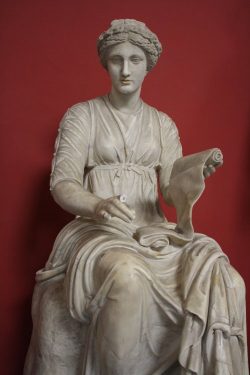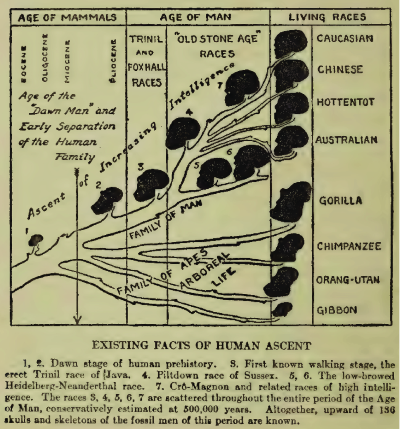
In part 3 of the study on the state of history in the National Park Service, the authors turn to the findings and recommendations. The section carries the ominous title “The Endangered and Fragmented State of History in the NPS.” The opening paragraph uses such words as “an afterthought,” “stagnant and irrelevant,” “erratic,” “underfunded, undervalued, underutilized and misunderstood,” “deteriorating,” “losing ground,” and “threatened.” And these were the words of the NPS respondents to the survey!
While there are individual success stories as recounted in the previous post, they tend to be locally-driven and without system-wide support or encouragement. When I was doing Teacherhostels/Historyhostels, I would notice the teachers who were determined to include local history in their classes no matter what. They were the ones who initiated the class trips or created the lesson plans about the history in the class’s backyard. Then the teacher (or sometimes principal) would retire or transfer and the effort would die. Even if one teacher took the lead, it did not necessarily mean the other teachers in the same grade in the same school or school system would follow. Yes, there are individuals who make that effort but they are the exception and they stand alone. Can the situation at the NPS be changed?
The authors declare that it can. They present a series of findings from their work and propose recommendations. I am not going to rewrite the 60+ page section to fit into a blog format. Instead, I will provide the findings and some of the key recommendations. Some of them will seem strangely familiar to anyone involved with the situation in the state below the federal level.
FINDING 1: THE HISTORY/INTERPRETATION DIVIDE
This finding refers to the organization of the bureaucracy. Since here in New York we have just gone through an effort to get a full-time historian, we should be able to relate the challenges confronting the NPS. One specific comment made was that historical research frequently is compliance and management focused and not for the interpreters who stand before the visitors. Sadly people in historical interpretation often have little formal training in history, subject knowledge, or expertise in doing primary source research. What’s worse is when the high-quality works and research which does occur ends up on shelves unread, unused, and inaccessible to the public. There is a disconnect with the visitors.
Recommendations
1. Restore full staffing and budget for the chief historian’s office
2. Create a History Leadership Council within the NPS with an annual meeting [could that be done at a state level and/or regional level even if national office ignored the recommendation?]
3. Revise the Essential Competencies for both interpreters and historians to promote cross-disciplinary training [what are the standards for competency as an interpreters or historian at non-NPS sites?]
4. Create long-range interpretive plans with a research needs component vetted by scholars, i.e., non-NPS people.
FINDING 2: THE IMPORTANCE OF LEADERSHIP FOR HISTORY
“An urgent need exists for visible, and well supported leadership that articulates an inspiring and wide- ranging vision for NPS history, encourages new directions, highlights and enables quality scholarship and innovation, and fosters interconnection and community among history and interpretative professionals throughout the agency and with historians outside NPS.”
Besides restoring the staffing and budget for the chief historian’s office noted above, other action should be taken.
Recommendations
1. Create a History Advisory Board to include representatives from national history and museum organizations and leading scholars to work with the History Leadership Council. I would add the executive director of the National Council for the Social Studies to the list.
2. NPS staff should attend professional conferences, pursue graduate training, and publish. I will be writing about this recommendation in an upcoming post based on my own experiences at some conferences this spring and summer.
3. FINDING 3: THE CHALLENGE OF DISCONNECTION
This finding relates to the isolation of history in the NPS. It refers to the isolation of people “doing” history and to the history knowledge. Respondents to the survey referred to the “total fragmentation” within an insular bureaucracy leaving people disconnected, isolated, and powerless. One result of the lack of the internal capacity of the NPS has been the outsourcing of work to contractors who have little connection to the organization. The report states that NPS staff “are not offered sufficient opportunities to take advantage of the crucial opportunities that professional conferences offer for ongoing connection with other historians.” It wasn’t even clear to the authors if the respondents had online access to scholarly journals the same way professors do through their colleges. Of course given the workload of the staff, shrinking travel budgets, and the lack of support from supervisors, it was problematic how much time NPS even had to avail themselves of such online access or to research/publish in such journals.
One respondent quoted in Finding 3 wrote: “I have begged, pleaded, and scrimped to attend conferences and necessary training,” a sentiment shared by multiple respondents. People resort to attending such conferences at their own expense and/or on vacation time. Superintendents may consider such absences as a “junket” or “boondoggle.”
Recommendations
1. Implement multiple avenues of internal communication within the NPS history staff. Since I maintain lists of NPS (and NYSOPRHP) staff, I sometimes wonder who else besides me is contacting the collective history staff on an ongoing basis on history-related issues. And this is not to say my own lists are comprehensive or up-to-date.
2. Collaborate with historians at colleges and universities.
3. Attend conferences both within the NPS and external to it and present at sessions at conferences
4. Obtain online access to scholarly journals and publish academic articles and monographs
5. Collaborate thematically citing the National Collaborative for Women’s History Sites (similar to the example of American Revolution sites in New York I mentioned in a previous post and Civil War sites which are not common in New York but are an obvious theme nationally).
4. FINDING 4: HISTORICAL EXPERTISE IN TODAY’S WORKFORCE
“[S]upport for professional expertise in history is surprisingly weak….[G]reater emphasis needs to be given to the acquisition and maintenance of a strong base of in-house, professionally qualified historical expertise.” The consultants devoted 7 pages to this finding. Clearly it is one of importance to them. The discussion covered issues like place-based history, professional training, raising job requirement standards, and hiring people at those higher levels. Ultimately the key may come down to the comment of respondent: “the agency would have to undergo a cultural transformation and value history equally with nature and recreation.”
Recommendations
1. Analyze the current standing of history within the bureaucratic job grades.
2. Support staff training as a budget line item including travel.
3. Upgrade research and interpretation skills based on the analysis in #1 above.
4. Raise standards.
FINDING 5: A HISTORY WORKFORCE FOR THE FUTURE
One immediate concern is the “graying” of Park Service staff. Where will the next generation of historians come from? This section encompasses a general discussion on the status of history (and Humanities) at the college and graduate school level. Obviously that topic is worthy of a post in its own right. One general observation I wish to make is the issue of the appeal of public history in general to those people who do purse graduate degrees in history. As long as the tenured position at a college is the primary goal, other venues suffer. What is the history career track in the NPS (or OPRHP or NYCParks or private non-profits or municipal historians)? Is it the purpose of the Cooperstown Graduate Program in museum studies to produces wives for the husbands who have the real jobs (a comment made a few years ago by a Cooperstown Graduate Program admissions officer or professor, I forget which, at a MANY conference wrap-up session to an audience of almost exclusively white women).
Recommendations
Besides enhancing the status of history within the NPS, the recommendations are:
1. Host public history field schools
2. Reach out to Graduate School directors and surplus history PhDs.
FINDING 6: INADEQUATE RESOURCES FOR HISTORICAL PRACTICES
This finding has to do with staffing, budgets, and organization including the use of volunteers for non-expertise jobs.
The remaining six findings will be reviewed in the next post.




